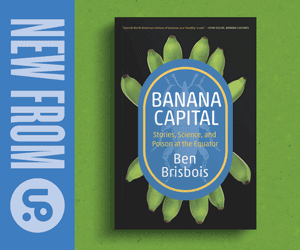The Ballerina and the Bull
From a spontaneous outpouring of critical energy and anger triggered by an enigmatic image in Vancouver’s Adbusters magazine, the Occupy Wall Street protest has grown over a period of several weeks into something bordering on a movement. It was slow in coming. Occupy Wall Street erupted in the United States in the wake of an eerily mute response to financial crisis, billionaire bailouts, coddling of corporate criminals and indifference on the part of those in power to the ensuing plight of working people faced with losing their homes and their jobs.
But now the simmering rage and despair of some of the 99 percent of Americans who are being made to pay the price for the mess made by the financial sector is boiling over, and the Arab Spring is being succeeded by the American Autumn. People are descending in their thousands into the streets to denounce the debacle of corporate rule and the growing chasm between the rich and the rest.
Although the still inchoate assembly has few mechanisms with which to articulate collective demands, the theme of the protest can be summarized in a single phrase evoked by the already iconic Adbusters image of the ballerina atop the bull: people over profit. And for the first time since the student movement in the 60s ventured to name the system, the words “capitalism” and “class” are reappearing in the lexicon of protest. One sign reads, “99 percent of us wake up on the wrong side of capitalism,” another reads “Capitalism ate democracy,” and yet another reads, “No war but class war.” The indictment of the savagery of the existing economic system is clear also from the first collective statement issued by the general assembly in Zuccotti Park which decries the subversion of democracy by corporate power and the perverse consequences of a regime where nothing is permitted to impede the pursuit of profit: illegal foreclosures, an unsafe food supply, cruelty towards animals, suppression of workers’ rights and benefits, limited access to education, media censorship, mercenary military production and myriad other miseries endemic to contemporary capitalism.
These charges are not being laid only by the anarchist groups who initiated the protest. People gathered in demonstrations in cities across the United States, and subsequently across Canada and around the world, are expressing recognition that the reigning power structure is rotten. Celebrities, scholars and, most importantly, unions have endorsed the protest, which has not been deterred by police harassment and mass arrests.
One of several notable intellectuals to address the protestors, ecologist Bill McKibben, also drew the connection between Occupy Wall Street and the urgency of combating global warming: “You could even say Wall Street’s been occupying our atmosphere, since any attempt to do anything about climate change always runs afoul of the biggest corporations on the planet. So it’s a damned good thing the tables are starting to turn.”
For those of us who have long been labouring to expose the inherent perils and injustices of the neoliberal regime, Occupy Wall Street is undoubtedly the most exciting political development in North America in decades.
Of course, it would be a mistake to read it as a revolutionary moment; the majority is protesting greed, corruption and inequity, not a system of which greed, corruption and inequity are the very DNA. And whether it can gather the critical mass and the momentum to bring about actual change remains an open question. But what may seem to some a weakness of Occupy Wall Street — its spontaneity and its refusal of traditional structures, discourse and leaders — may well be one of its strengths. In its militancy, its mass appeal, its creativity and its critical consciousness, Occupy Wall Street may just prove a turning point, ushering in a new era of dissent and fighting spirit.
This article appeared in the November/December 2011 issue of Canadian Dimension (Stepping up for the Planet).







